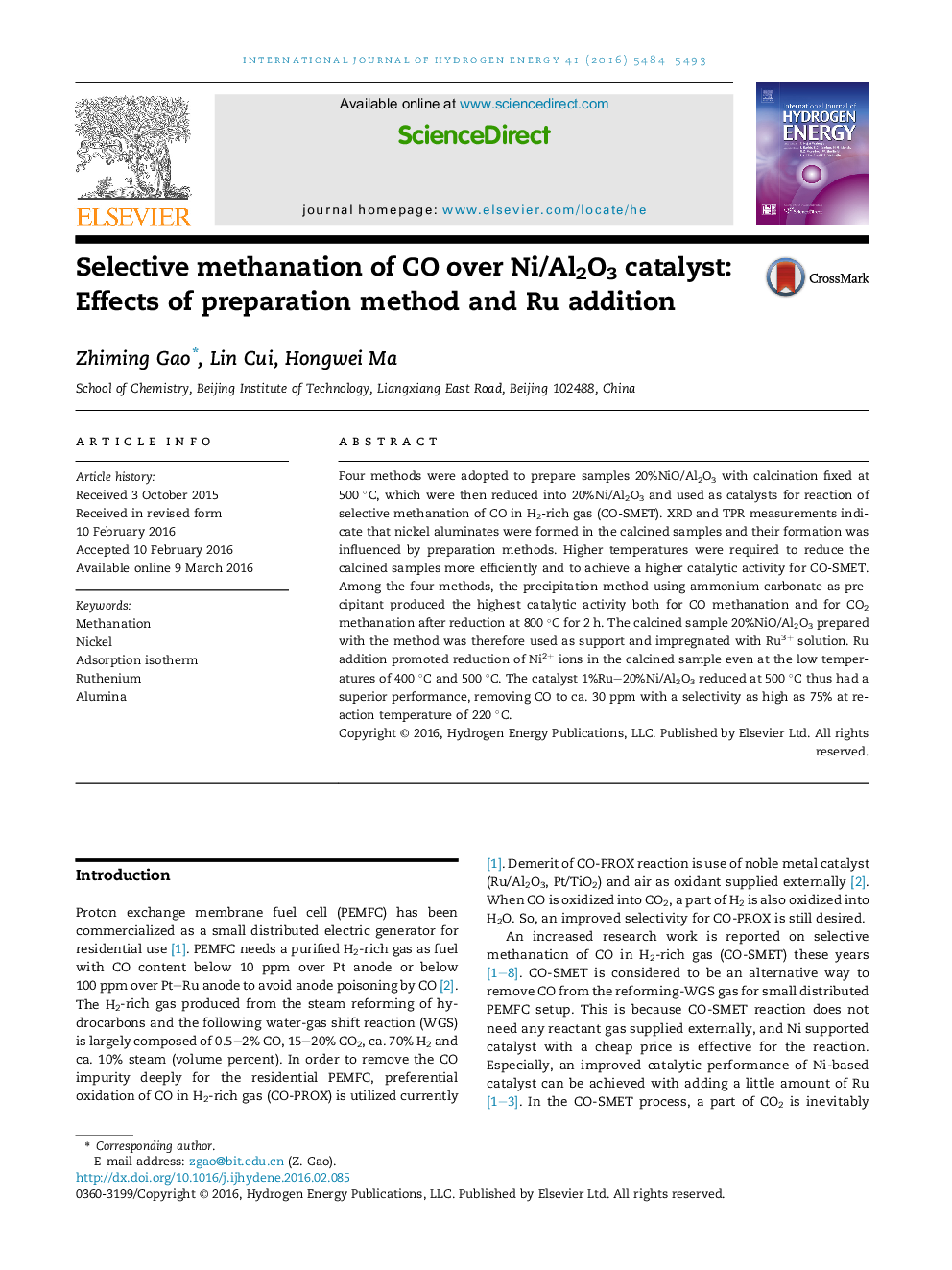| Article ID | Journal | Published Year | Pages | File Type |
|---|---|---|---|---|
| 1268789 | International Journal of Hydrogen Energy | 2016 | 10 Pages |
•Nickel aluminates were formed in the calcined samples NiO/Al2O3.•Preparation methods influenced formation of nickel aluminates.•Ru addition promoted Ni2+ reduction and improved selectivity.•The Ru–Ni/Al2O3 catalyst had a superior performance for removing CO.
Four methods were adopted to prepare samples 20%NiO/Al2O3 with calcination fixed at 500 °C, which were then reduced into 20%Ni/Al2O3 and used as catalysts for reaction of selective methanation of CO in H2-rich gas (CO-SMET). XRD and TPR measurements indicate that nickel aluminates were formed in the calcined samples and their formation was influenced by preparation methods. Higher temperatures were required to reduce the calcined samples more efficiently and to achieve a higher catalytic activity for CO-SMET. Among the four methods, the precipitation method using ammonium carbonate as precipitant produced the highest catalytic activity both for CO methanation and for CO2 methanation after reduction at 800 °C for 2 h. The calcined sample 20%NiO/Al2O3 prepared with the method was therefore used as support and impregnated with Ru3+ solution. Ru addition promoted reduction of Ni2+ ions in the calcined sample even at the low temperatures of 400 °C and 500 °C. The catalyst 1%Ru–20%Ni/Al2O3 reduced at 500 °C thus had a superior performance, removing CO to ca. 30 ppm with a selectivity as high as 75% at reaction temperature of 220 °C.
